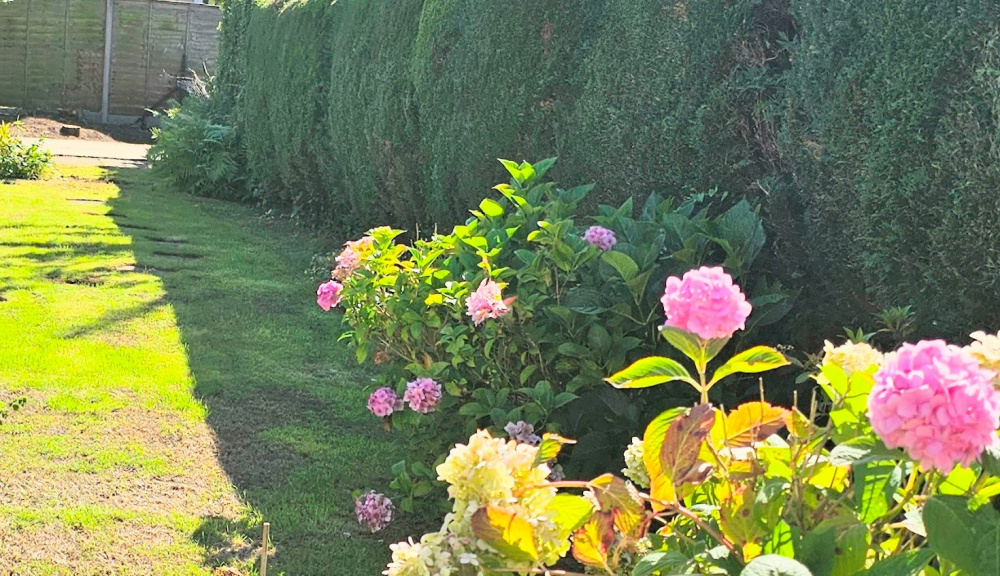This Forum will close on Wednesday 27 March, 2024. Please refer to the announcement on the Discussions page for further detail.
Leylandii hedge - flower bed -yes/no?
 HeyHo!
Posts: 113
HeyHo!
Posts: 113
Is it worth putting a flower bed along side old leylandii hedge? Will it work or would I be wasting my time?
It would be east facing and shadow of the hedge most of the time.
At the moment, st johns wort and hydrangea plant grows along one end of the hedge. This gave me the idea of forming a flowerbed (2 feet wide) and put few small shrubs with a decorative edge to the flower bed.

At the moment, st johns wort and hydrangea plant grows along one end of the hedge. This gave me the idea of forming a flowerbed (2 feet wide) and put few small shrubs with a decorative edge to the flower bed.
Perhaps planting hydrangea shrubs would make it easier to trim the hedge.
Is this a ridiculous idea?
0
Posts
However, if that's either not possible, unrealistic, or not favourable, then definitely increase the width of the border if possible.
If you're keeping the hedge - I'm guessing that's a 'yes', then a clear path for maintenance is definitely required, as said. At least a couple of feet.
If you don't have enough rainfall getting to a border to ensure it gets into it properly and consistently, you'll either need to pick plants which suit drier conditions, or you'll need to be vigilant with watering.
If you have a raised bed - which is really the best idea, it needs to be a decent enough height so that you have adequate depth of good soil for your plants - and it will need to be soil. The width of a raised bed is less important than if you have a bed in the ground, but the closer it is to the hedge, and the narrower it is, the more shady it will be, so planting will have to be considered to suit that.
East facing isn't necessarily a problem, but the moisture levels of the growing medium is what matters. The shadier aspect will mean it won't dry out so quickly, but it won't benefit from wetter conditions in winter because it isn't a deciduous hedge.
I live in west central Scotland - not where that photo is...
They found that after a few years the roots from the hedge discovered the fertile soil in the raised beds and the raised beds subsequently became a mass of roots from the hedge.
Billericay - Essex
Knowledge is knowing that a tomato is a fruit.
Wisdom is not putting it in a fruit salad.
I also wonder if the 'root' problem so often mentioned is because of lighter, drier soil, making it easier for roots to surface - looking for moisture. We really don't have that problem because of the type of soil and the conditions.
I've often had raised beds or plants right in front of conifers. My old house, round the corner from here, now has a [hideous] leylandii hedge but all the plants nearby - most of which I planted - are still fine. There's two mature trees still there [a maple and a lime] sitting in the boundary, as well.
I live in west central Scotland - not where that photo is...